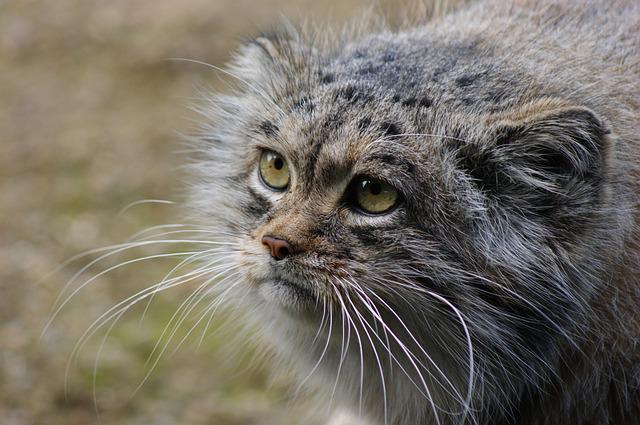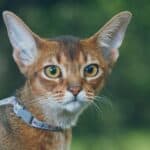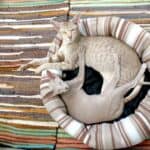
Pallas’s cat, with its round, round eyes, is a truly curious animal. Do not imagine a domestic cat because it is a cat with extraordinary fur, thick and very long, with small and distant ears and a round muzzle that lives in 14 countries all located in Central Asia.
Unfortunately, he is still hunted and is therefore at risk, to draw attention to him is certainly his beautiful coat but there are also those who look for him because it is used in traditional Chinese medicine.
Pallas’s cat or sand cat
Known as manul or even steppe cat, seen where it lives, Pallas’s cat belongs to the Felidae family and owes its name to the first zoologist who was able to describe it completely. It is a German scholar whose full name is Peter Simon Pallas.
Pallas’s cat: characteristics
Although we call ourselves a cat, we don’t think of a cat to, but at the same time we don’t even have to fear finding ourselves in front of a cat the size of a tiger. Among the felids, the Pallas cat remains one of the smallest with a length of about 60 centimeters, the tail excluded because it measures 25 centimeters alone. We have mentioned his magnificent fur but without giving any elements to imagine it.
It is clear, ocher in color but not “solid color”. In fact, it shows vertical stripes that are not always so evident because the fur is thick, long and thick. If you happen to see specimens of other colors you are not confused, ocher is the base color but it can change with the seasons. In summer it tends to light brown but with the arrival of winter the fur of the Pallas cat fades and tends to gray becoming even more uniform with the increasingly hidden stripes.
It cannot be said that the steppe cat is just a classic feline like panthers, tigers, leopards and cheetahs because although belonging to the same category, it shows some peculiar characteristics. Starting with the short legs, the rather pronounced back and the hair that is much longer and thicker than that of any other cousin.
Even looking at him “in the face”, we cannot say that he has the face of a cat or in general of a felid because the rounded and low ears make him look much more like an owl. Even the flat muzzle does not help and often makes one compare the Pallas cat to the Persian cat. Another difference between him and the other felids is the pupil which in moments of maximum brightness becomes a dot and not a crack as happens even to the most docile domestic cats.
Pallas’s cat: is it dangerous?
With this strange appearance, categorized as feline but not entirely feline, Pallas’s Cat can in a certain sense be intimidating but we can relax, first of all it is very far from us, but even if it were close it would be interested in something else.
It is a classic nocturnal predator and its most classic preys are the pika daurico (Ochotona dauurica) and the Mongolian silver vole (Alticola semicanus), the Mongolian marmot (Marmota sibirica), the Mongolian gerbil (Meriones unguiculatus), Brandt’s vole (Lasiopodomys brandtii). It is also able to eat other carnivores such as the common fox (Vulpes vulpes) and the corsac (Vulpes corsac), various species of mustelids. And ungulates as well as many small wild mammals and other vertebrates.
Pallas’s cat: animal at risk
Instead of asking ourselves if we are in danger, therefore, we should ask ourselves if he is not in danger because there are many threats and dangers that besiege our Pallas cat. So the answer is yes, he is an endangered species. One of the reasons for the population decline of these special cats is the disappearance of the Mongolian marmot which is one of its favorite prey and in some areas the only one. Talking about mainly rocky areas where Pallas’s cat uses the dens of these animals also to shelter from the attacks of its predators, birds of prey, wolves and more, not being able to dig similar tunnels. It is not in its strings. With fewer marmots and fewer shelters, Pallas’s cat is taking refuge it is exposed to several risks and is forced to stay in a more limited area of territory, where there is a genetic weakening and therefore also a risk for the species.
Among the enemies of this feline, especially in Mongolia, we find the shepherd dog. These are dogs that live with the families of shepherds but who move several kilometers away from their case by wandering freely and when they find a Pallas Cat by chance they are able to kill it without difficulty.
Pallas’s cat: habitat
However, Pallas’s cat does not live only in Mongolia: we can find it in the steppes of central Asia and therefore also in those of China, and its range reaches as far as Iran, Armenia and Azerbaijan. At the level of altitude, we can also meet it at 5,050 meters.






